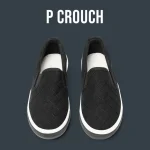The Nissan Pathfinder is a symbol of versatility and reliability, associated with both off-road driving and pleasant family trips. However, its history includes notable models, as well as others that are best forgotten.
The experts at Indy Auto Man’s used Nissan dealership analyzed statistics and owner reviews to highlight the best and worst years of the Nissan Pathfinder.
A Brief History of the Pathfinder
Since its debut in 1986, the Nissan Pathfinder quickly became popular among SUV enthusiasts for its driving performance, low operating costs, and practicality. Initially a rugged, frame-based off-road vehicle competing with the Isuzu Trooper and Jeep Cherokee, it has since evolved into a versatile, everyday mid-size SUV, now comparable to models like the Honda Pilot and Toyota Highlander.
Recommended Nissan Pathfinder Models
Second Generation Pathfinder (R50) – Best from 1999 The second generation, launched in 1996, came with a powerful 3.3-liter V6 engine but shifted away from a frame design. This version offered improved fuel efficiency, a more comfortable interior, and better handling. Even in 2024, this generation is known for its reliability, with minimal issues reported.
Key advantages:
- Strong performance
- Reasonable fuel consumption
- Spacious and comfortable interior
- Low maintenance costs
The 1999 model, after a mid-cycle refresh, is especially recommended as the most reliable version.
Third Generation Pathfinder (R51) – Best from 2008 The third-generation Pathfinder debuted in 2004, initially with mixed reviews. Nissan reintroduced the frame but reduced the overall weight, and added an optional third row of seats. The 2008–2012 models, powered by the 5.6-liter V8 engine from the Infiniti QX56, are highly regarded for their durability.
Key advantages:
- Proven V8 engine
- Comprehensive safety features
- High-quality, spacious interior
- Modern amenities
Fifth Generation Pathfinder (R53) – Since 2022 The current Pathfinder generation, introduced in 2022, boasts a modern design, enhanced all-wheel drive capabilities, and advanced technology. Its spacious, quiet interior and cutting-edge features make it an excellent choice for families seeking a well-rounded vehicle.
Key advantages:
- Reliable powertrain
- Sleek, modern design
- Advanced technology for a comfortable ride
Years to Avoid
Some models of the third generation (2005–2008) and early versions of the fourth generation (2012–2017) had significant reliability issues, leading to recalls and expensive repairs. These years should be thoroughly inspected before purchase.
2005 Third Generation Pathfinder (R51) The 2005 Pathfinder faced numerous problems, particularly with the transmission and cooling system. It is the most complained-about year across all generations.
Common 2005 issues:
- Transmission problems (coolant leakage into the transmission)
- Radiator and coolant leaks
- Timing chain wear, causing engine trouble
Fourth Generation Pathfinder (R52) – Worst from 2012 In 2012, Nissan launched the fourth-generation Pathfinder as a crossover with significant design changes. Built on the Nissan D platform with a unibody construction, it featured AWD or FWD options and a CVT transmission. However, it received many complaints, particularly related to the CVT.
Common 2012 issues:
- CVT failures
- Quick wear on interior materials
- Electrical issues caused by faulty sensors and wiring
- Frequent air conditioning problems
Despite the problems in earlier years, from 2018 onward, the Pathfinder regained its reputation for reliability across the board.
Conclusion
The Nissan Pathfinder has transformed from a rugged SUV to a versatile family vehicle over the years. By focusing on the most reliable models and avoiding the problematic ones, buyers can enjoy all the benefits of the Pathfinder without frequent repairs. A careful inspection and informed decision-making will ensure a reliable purchase when considering a used model.










